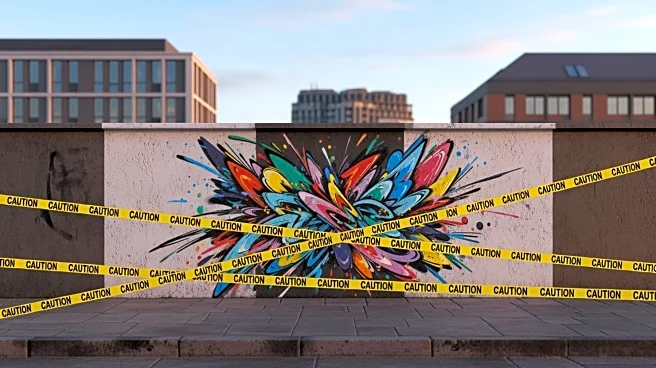What's Happening?
A man named Daniel Parmenter, aged 44, is on trial for allegedly causing a bomb scare at the US Embassy in Nine Elms, London. On November 22, 2024, Parmenter left a collection of items outside the embassy,
which included an iPad with taped firework wires, a drum, and a metal tray with a skull and crossbones. These items were perceived as a potential bomb threat, leading to the embassy going into lockdown and the deployment of bomb disposal officers who conducted a controlled explosion. Parmenter, who resides in Bayswater, west London, claims the items were intended as a 'gift' and described them as 'sophisticated graffiti art.' The prosecution argues that the items were left to cause alarm, while Parmenter denies any intent to harm.
Why It's Important?
This incident highlights the heightened security measures and sensitivities surrounding diplomatic missions, particularly in light of global security concerns. The lockdown of the US Embassy underscores the potential for misinterpretations of artistic expressions as threats, which can lead to significant disruptions and resource deployment. The case also raises questions about the boundaries between art and public safety, and the responsibilities of individuals in ensuring their actions are not misconstrued as threats. The outcome of this trial could influence future legal interpretations of similar incidents and the handling of perceived threats at sensitive locations.
What's Next?
The trial is ongoing, with the key issue being whether Parmenter intended for the items to be perceived as a threat. The court will need to determine if his actions were a form of artistic expression or a deliberate attempt to cause alarm. The verdict could have implications for how similar cases are prosecuted in the future, particularly concerning the intent behind actions that lead to public safety concerns. Stakeholders, including security agencies and the art community, may closely watch the trial's outcome for its potential impact on security protocols and artistic freedoms.













